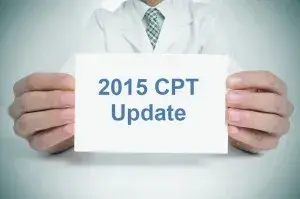This August, the American Medical Association (AMA) released the CPT code changes that are going to be effective from January 1, 2015, with significant changes to radiation oncology. Apart from new codes that better reflect current practices, there are some changes for widely used conventional radiation therapy.
Deletion of Codes
The following nine CPT codes traditionally used for reporting conventional radiation therapy have been deleted.
- 77403: Radiation treatment delivery; single treatment area, single port or parallel opposed ports, simple blocks or no blocks; 11-19 MeV
- 77404: Radiation treatment delivery; single treatment area, single port or parallel opposed ports, simple blocks or no blocks; 6-10 MeV
- 77406: Radiation treatment delivery; single treatment area, single port or parallel opposed ports, simple blocks or no blocks; 20 MeV and greater
- 77408: Radiation treatment delivery; two separate treatment areas, three or more ports on a single treatment area use of multiple blocks; 6-10 MeV
- 77409: Radiation treatment delivery; two separate treatment areas, three or more ports on a single treatment area use of multiple blocks; 11-19 MeV
- 77411: Radiation treatment delivery; two separate treatment areas, three or more ports on a single treatment area use of multiple blocks; 20 MeV or greater
- 77413: Radiation treatment delivery; three or more separate treatment areas; custom blocking, tangential ports wedges, rotational beam, compensators, electron beam; 6-10 MV Complex
- 77414: Radiation treatment delivery; three or more separate treatment areas; custom blocking, tangential ports wedges, rotational beam, compensators, electron beam; 11-19 MV Complex
- 77416: Radiation treatment delivery; three or more separate treatment areas; custom blocking, tangential ports wedges, rotational beam, compensators, electron beam; 20 MV or greater
New Codes
From January 1, 2015, conventional radiation treatment delivery using a megavoltage beam will be reported using three codes only. The energy level of megavoltage beam will no longer be used for defining the complexity level of the treatment delivery codes. The descriptors and criteria to be used for reporting these codes are as follows.
- 77402: Radiation treatment delivery, >1 MeV; simple
- 77407: Radiation treatment delivery, >1 MeV; intermediate
- 77412: Radiation treatment delivery, >1 MeV; complex
The criteria for choosing these codes are described as follows:
Simple
All of the following criteria are met with none of the complex or intermediate criteria.
- Single treatment area
- One or two ports
- Two or fewer simple blocks
Intermediate
Any of the following criteria are met with none of the complex criteria.
- Two separate treatment areas
- Three or more ports on a single treatment area
- Three or more simple blocks
Complex
Any of the following criteria are met.
- Three or more separate treatment areas
- Custom blocking
- Tangential ports
- Wedges
- Rotational beam
- Field-in-field or other tissue compensation that does not meet IMRT guidelines
- Electron beam
It is expected that the Centers for Medicare & Medicaid Services (CMS) will release the Medicare values for these codes with the 2015 Medicare Physician Fee Schedule Final Rule that is to be released around November 1. Radiology practices should enhance their documentation policies as early as possible to adopt these changes by the time it is implemented to avoid any drop in revenue. With the help of experienced medical billing and coding professionals, they can assign the correct codes and receive proper reimbursement.




